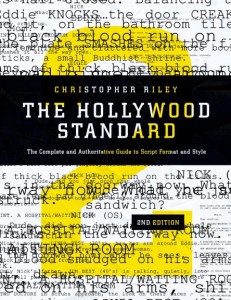The Continuing Use of CONT’D
I’m still seeing a ton of people using “(CONT’D)” unnecessarily in their scripts, so it’s time for a quick rant post.
In years past, it was common to use “(CONT’D)” whenever a character’s dialogue was broken by action or scene description. For example:
FRAZZLED TEACHER
Who can tell me how many human blood types there are?
Dracula Jr. raises his hand.
FRAZZLED TEACHER (CONT’D)
Anyone else?
The “(CONT’D)” above is completely unnecessary these days.
Anytime you can eliminate something and gain more whitespace, that’s a good thing. It makes the script feel lighter and easier to read.
Many screenwriting programs will have the “(CONT’D)” enabled by default, so you’ll have to turn that option off. For example, in Final Draft, you would go to Document -> “Mores and Continueds…” Then deselect the “Automatic Character Continueds” option.
The Exceptions
It’s still important to leave the bottom of the page: “(MORE)” and the top of the page: “(CONT’D)” in place, wherever a dialogue block breaks onto the next page.
And if you’re writing a shooting script, you would still use CONTINUEDs for scene breaks across pages.
Also, this rule only applies to film writing. If you’re writing a spec script for a television show, be sure to follow the established guidelines (i.e. half hour television shows would still typically use “(CONT’D)”).
More Information
If you’d like to continue your investigation into “CONT’D” and its various uses, I highly recommend Christopher Riley’s book: The Hollywood Standard: The Complete and Authoritative Guide to Script Format and Style
In it, he goes so far as to say (in bold):
Marking continuing speeches is no longer standard practice in Hollywood and hasn’t been for at least 20 years.
That sounds pretty decisive.






Thank you Trevor, Very helpful. Maybe one day I’ll actually see my name on the screen
Screenplay By
Kevin W. Banker
That looks pretty cool!
Sorry I just went to a happy place just then… LOL
Hey, someone’s name has to be up on the big screen. Might as well be yours!